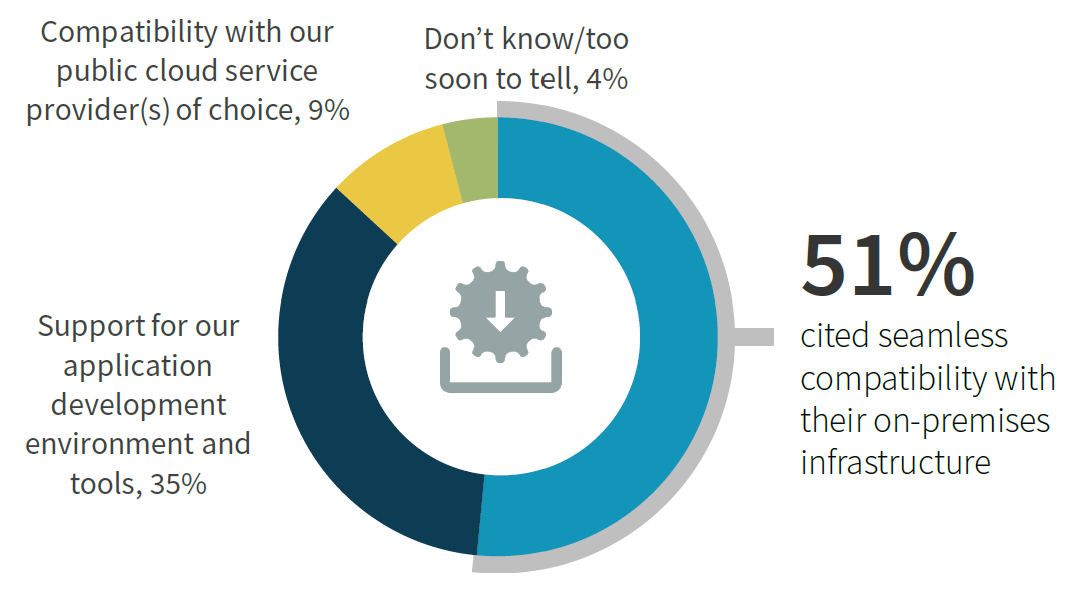On-premises integration is vital to hybrid cloud strategies. Many organizations have an on-premises-first mindset as they begin to formulate their hybrid cloud strategies. According to Enterprise Strategy Group research into hybrid cloud trends, when asked to identify the most important consideration in these decisions, more than half cited seamless compatibility with their on-premises infrastructure. Furthermore, nearly three-quarters of organizations stated that it was critical or very important that public cloud service providers offer solutions that integrate with their on-premises environments.
The majority of organizations still view on-premises as important. In fact, nearly nine of ten organizations expect to have a significant (35%) or measurable (54%) on-premises environment in three years.
Clearly many organizations have an on-premises-first mindset as they begin to formulate their hybrid cloud strategies. When asked to identify the most important consideration in these decisions, more than half (51%) cited seamless compatibility with their on-premises infrastructure.

So, this makes sense considering the decades of on-prem IT infrastructure and process, but IT pros have to be careful not to just move a problem from point A to point B. Cloud consumption strategies should inspire innovation and opportunity to embrace cloud services…even for IT pros who have spent their lives in a data center.
From an IT vendor perspective, the hybrid cloud market is fired up. Traditional on-prem hardware infrastructure OEMs are scrambling not to be vaporized while public cloud hyperscalers like Microsoft Azure, AWS, and Google are all backing down on the on-prem footprint. The fascinating part is how approaches vary. Microsoft partners with traditional hardware OEMs to land Azure Stack integrated systems on-prem. AWS drives a semi-trailer truck into the parking lot for exabyte-scale data transfer and is backing the bus up to drop off Outposts into the on-prem data center. On the other hand, Google is standing out as the only vendor among the hyperscalers to beat the drum on multi-cloud support with Anthos, which is focused on container management.
Yes, on-prem is important, but the IT pros I speak with are closing data centers and shifting strategies toward cloud consumption models. The on/off-prem workload is in an unbalanced state while the center of gravity shifts toward public cloud consumption.






